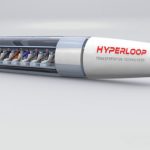Hassle-free tyre solutions

With so many tyre support solutions available, choosing the most suitable one can be difficult. WILLIAM GEORGE speaks to some companies about the latest technology in tyre-pressure monitoring systems
Maintaining tyres properly makes operations easier for fleet owners. It also ensures better safety for all road users. Tyre hitches, such as punctures and misalignment, can be costly and reduce fleet operating efficiency.
The Automotible Association (AA) warns that the most overlooked critical safety items on vehicles are tyres. “Any tyres that are bald, or under- or over-inflated, can be dangerous,” it states.
As tyres form a crucial component of a vehicle, it is vital for operators to conduct regular inspections, services and repairs. All tyres (including those on trucks, trailers and other bodies) need to be monitored frequently to ensure hassle-free operations.
The automotive market is constantly offering new technologies to improve support for tyres.
The Vigia Internal system is specifically designed to protect trailer tyres. The device continuously monitors the pressure of trailer tyres while travelling and automatically adds air to those that need it to maintain pre-set tyre pressures.
Vigia & Onboard weighing brand executive at Loadtech, Neels Botes, says: “This helps the driver adhere to pre-arranged delivery times and prevents the expensive loss of perishable loads.
“The indicator light is positioned for the driver to see in the truck rear-view mirror. It turns on to warn the driver when a tyre’s pressure drops. The system will then add the required air automatically. This prevents any tyre from going flat from a small puncture.”
He continues: “In most cases when using a Vigia system, a leaking tyre can be saved. There will be no delays from having to change flat tyres in awkward places and deliveries can be made on time. When starting up in the morning, the Vigia system will check and correctly inflate all the tyres.
“Underinflation reduces tyre life, so this is another major saving. Fuel is also saved and so is time, in that it is not necessary to constantly check tyre pressures.”
According to the Road Traffic Management Corporation (RTMC), poorly maintained tyres and particularly burst tyres are a leading factor in fatal road crashes in South Africa.
Botes says: “Underinflated tyres can also affect the handling of the vehicle and contribute to accidents. Correct tyre pressure provides proper sidewall flexing and safe operating temperatures. Underinflation becomes a serious problem when one tyre on a set of dual wheels loses pressure. In some cases, both tyres can fail with very dangerous consequences.”
Botes explains that different pressures over a set of dual tyres can also result in premature bearing failure, which can reduce bearing life by up to 70 percent. This is one of the hidden costs of poor tyre maintenance.
Connected tyre solutions from tyre manufacturers are also available to aid tyre management.
The ContiPressureCheck from Continental is a pressure-monitoring system that mounts on the inside liner of the tyre to measure inflation and temperature changes. These systems are ideal for overall fleet operation.
Truck business unit marketing manager at Continental, Monica Ramsunder, says: “Improper tyre inflation leads to poor vehicle handling and stopping distances increase with underinflated tyres. What’s more, there is an increased potential for skidding, or loss of control in a bend or when changing lanes, when driving on underinflated tyres.
“There is also the impact on emissions and the environment. Increased rolling resistance increases your fuel consumption and, in turn, produces more CO2 emissions. Improperly inflated tyres are also more susceptible to blowouts, which leaves dangerous debris on the road.”
Likewise, Bridgestone uses IT systems and sensors to remotely monitor, transmit and analyse real-time information; such as the pressure and temperature of commercial truck and bus tyres.
“This data allows Bridgestone’s advanced data-processing system to react more quickly to pressure issues, informing the fleet manager if a tyre is rapidly deflating. The system also enables advanced algorithms to generate predictive maintenance scheduling,” says Bridgestone technical manager, Dries Venter.
Bridgestone shares a few tips to help operators cut down on tyre-related costs. These include:
• A thorough tyre assessment should be done at least every two weeks, to ensure that tyre inflation pressures are correct. Mechanical maintenance, such as wheel alignment, can also be checked and corrected.
• Drivers should be trained to check and report any abnormalities on their vehicles, including tyres. Early detection and correcting of tyre-related wear and inflation pressure will save any fleet lots of money.
Bridgestone further extends support to drivers, with training interventions that are available through Bridgestone’s training centre and done at the fleet operator’s depot.
Michelin offers Tyre Check, a tyre-monitoring device that enables fleet operators to have instant visibility of the tyres in their fleets.
The Tyre Check system is a digitalised inspection tool. It operates via Bluetooth and is network driven, so it minimises human errors, which can be costly in terms of breakdowns and loss of mileage of the tyre.
Kabelo Lenamile, fleet operator at Michelin, says: “Tyre Check sends real-time configured alerts, along with other reporting abilities, to the service provider and/or the fleet operator’s email account, which enables them to take action before the vehicle leaves the yard.
“The device can also be connected to Android devices to ensure that the operator is informed at all times. It helps operators by saving time and increasing work productivity.”
Lenamile says: “We strongly believe in preventative maintenance, minimising costs and keeping the vehicles moving on the road. We feel we can drastically reduce breakdowns with proper tyre care. We also offer a national breakdown network and call centre for the unavoidable mishaps.”
Tyres naturally lose pressure over time, which is why ongoing monitoring is essential, but, thankfully, technological solutions are helping to make the task of tyre-pressure management a lot easier.
Soybean oil and tomorrow’s tyres
 The Goodyear Tyre & Rubber company is harvesting some unique “seeds” of innovation as it introduces a new tyre technology with support from the United Soybean Board (USB).
The Goodyear Tyre & Rubber company is harvesting some unique “seeds” of innovation as it introduces a new tyre technology with support from the United Soybean Board (USB).
A Goodyear team of scientists and engineers created a tread compound using soybean oil, which is a naturally derived, cost-effective, carbon-neutral and renewable.
“Goodyear’s legacy of innovation drives us to continue to apply new technology solutions, developing superior performing tyres that meet consumer demands,” says Eric Mizner, Goodyear’s director of global material science.
Goodyear’s tests have shown rubber made with soybean oil mixes more easily in the silica-reinforced compounds used in manufacturing certain tyres. In addition to increasing the tyre’s performance in dry, wet and winter conditions, this process also improves manufacturing efficiency and reduces energy consumption.
While the technology is currently available only to North American consumers, the commercialisation of soybean oil in tyres builds on Goodyear’s other recent innovations, such as the use of silica derived from rice husk ash.
Published by
Focus on Transport
focusmagsa




